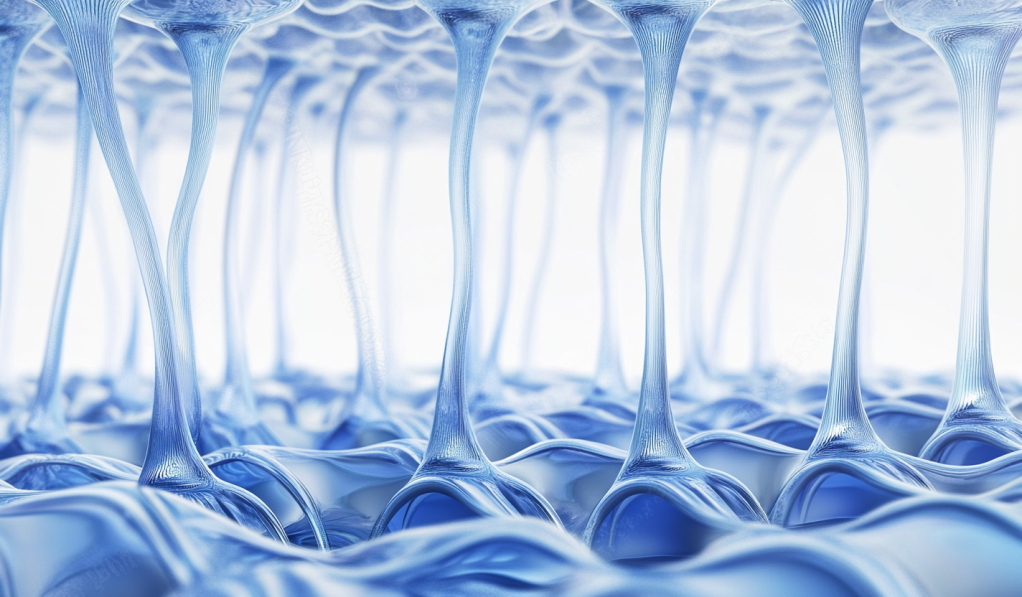Your skin is home to a diverse ecosystem of microorganisms that play key roles in maintaining healthy skin. Here’s how they work together to support your skin:
1.Participating in Skin Metabolism: Some skin surface microbes break down the sebum produced by sebaceous glands, turning it into free fatty acids. This lowers the skin's pH, creating a mildly acidic environment that helps protect against harmful bacteria and neutralize alkaline substances that may come into contact with your skin.
2.Nutritional Role: While sloughed-off skin cells may seem like waste, they provide nourishment for microbes. However, the larger molecules in skin cells can't be directly absorbed. Microbes break them down into smaller molecules, making them accessible for the skin’s nourishment.
3.Immune Defense: The relationship between resident skin microbes and your immune system is more than just peaceful coexistence—they also help stimulate protective immune responses. This makes your body better equipped to fend off infections. These microbes can even directly or indirectly stimulate the skin’s keratinocytes to produce antimicrobial peptides, defending against pathogens.
4.Self-Cleaning: Some of the skin’s resident bacteria, like Propionibacterium acnes and Staphylococcus epidermidis, help break down sebum into free fatty acids. This helps keep the skin's surface slightly acidic, preventing the growth of unwanted microbes.
5.Barrier Function: The skin’s microbiota forms a protective layer—like a biological film—that defends against harmful pathogens. By occupying space on the skin's surface, beneficial microbes prevent harmful bacteria from setting up shop, maintaining a strong ecological barrier.

Skin Microecology and Skin Issues
1.Acne: Acne is closely tied to an imbalance in the skin microbiome, primarily driven by overgrowth of Cutibacterium acnes (formerly Propionibacterium acnes), Malassezia species, and pathogenic strains of Staphylococcus aureus. In healthy skin, C. acnes helps regulate pH and inhibits harmful microbes through antimicrobial short-chain fatty acids. However, factors like hormonal changes or excess sebum can disrupt this balance, leading to pore blockage, inflammation, and bacterial overgrowth. S. aureus worsens acne by secreting enzymes that break down the skin barrier. To address this, ZQ-II Acne Gel combines plant-derived cymen-5 (an antimicrobial and anti-inflammatory agent) and asiaticoside (from Centella asiatica) to unclog pores, reduce redness, and prevent new breakouts, making it suitable for oily, acne-prone, and sensitive skin.
2.Melasma (Hyperpigmentation): Melasma is linked to microbiome imbalances involving pigment-producing microbes like C. acnes and Malassezia, which stimulate melanocytes through inflammatory signals (e.g., IL-17) and oxidative stress. A weakened skin barrier, marked by low filaggrin and high moisture loss, further promotes UV-induced pigmentation. ZQ-II PLLA Nutrients Fills tackles this by degrading lactic acid to boost collagen I/III synthesis, accelerating skin renewal and pigment metabolism. It also creates microchannels to enhance the penetration of brightening agents (e.g., niacinamide), effectively breaking down melanin clusters and restoring an even skin tone.
3.Atopic Dermatitis (Eczema): Atopic dermatitis (AD) stems from a compromised skin barrier and microbial dysbiosis dominated by S. aureus. This pathogen releases toxins that degrade ceramides—key lipids constituting 50% of the skin barrier—and trigger chronic inflammation. The resulting "itch-scratch cycle" perpetuates dryness and infection. ZQ-II Barrier Repair Gel addresses this with ceramides to rebuild the lipid barrier, oligopeptide-1 to repair damaged keratinocytes, jojoba oil to mimic natural sebum for hydration, and hyaluronic acid for deep moisture retention. This formulation not only soothes eczema but also strengthens resilience against environmental triggers and sensitivity.

Your skin's microbiome is more than just a collection of bacteria—it’s a dynamic, protective system that works with your skin’s natural defenses. When it’s balanced, your skin stays healthy, hydrated, and resilient. But when that balance is disrupted, it can lead to a variety of skin issues. So, maintaining a healthy microbiome is key to keeping your skin glowing and protected.


